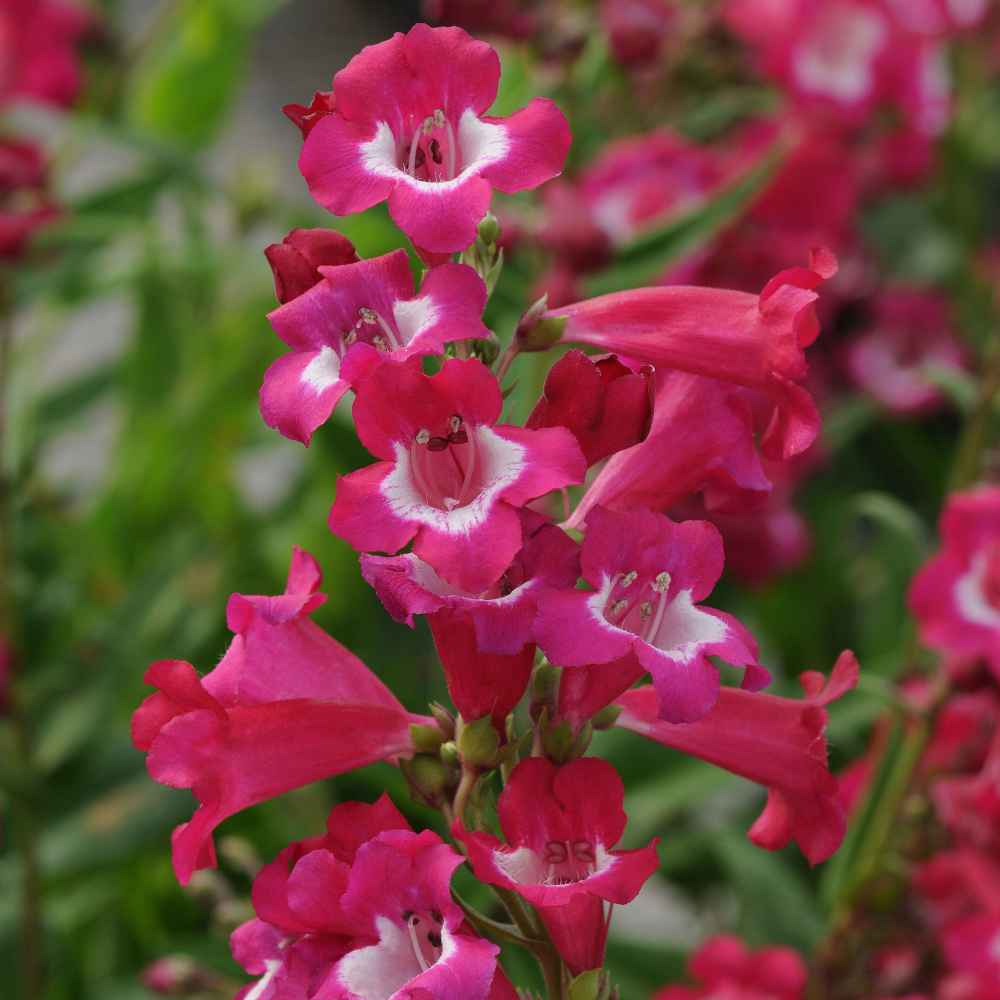-
CATEGORY ::
- All Seeds /
- All Flower Seeds /
- All Penstemon Seeds









Penstemon Seeds - Scarlet Queen
About...
Penstemon (Penstemon Hartwegii Scarlet Queen) - If you enjoy attracting beneficial insects to your landscape, start Penstemon seeds and enjoy this long-blooming drought tolerant Scarlet Queen. Hummingbirds also will enjoy the brilliant scarlet tubular flowers with white throats.MORE PENSTEMON OPTIONS
Flower Specifications
SEASON
Perennial
USDA ZONES
8 - 10
HEIGHT
30 inches
BLOOM SEASON
Late spring through fall
BLOOM COLOR
Scarlet
ENVIRONMENT
Full sun to partial shade
SOIL TYPE
Well-drained soils, pH 5.8 - 6.8
DEER RESISTANT
Yes
LATIN NAME
Penstemon hartwegii
Planting Directions
TEMPERATURE
60 - 70F
AVERAGE GERM TIME
14 - 30 days
LIGHT REQUIRED
Yes
DEPTH
Cover lightly, seed should be visible
SOWING RATE
2 - 3 seeds per plant
MOISTURE
Keep seeds moist until germination
PLANT SPACING
16 - 20 inches
Beautiful Upright Flower
Scarlet queen penstemon is a striking plant to add to your garden: it rises high to display its rich scarlet color.

Striking Bi-Color Flowers
How To Grow
Scarlet queen seeds do not need a cold treatment before germination as some species may require. Start indoors in starter trays or small pots in the late winter. Sow 2-3 seeds per plant, and press seeds lightly into the soil, but do not cover: light is needed for germination. Make sure to keep seeds moist until germination. Seedlings can be transplanted outdoors after all danger of frost has passed. However, harden off the seedlings for 10 days or more before moving to their final location. When transplanting, pinch back the plant to promote bushier growth.
- Environment: full sun to partial shade
- Soil: well-drained with pH 5.8-6.8
- Plant spacing: 16-20 inches

Plant Information
Scarlet queen penstemon is an annual wildflower native to the western U.S. and Mexico. it grows in USDA zones 8-10: in frost-free, mild winters, it will grow as short-lived perennial.
- Height: 30 inches
- Bloom color: scarlet
- Bloom season: late spring through fall
- Average germ time: 14-30 days
Penstemon (Penstemon Hartwegii Scarlet Queen) - If you enjoy attracting beneficial insects to your xeriscape landscape, start Penstemon seeds and enjoy this long-blooming Scarlet Queen. Hummingbirds also will enjoy the brilliant scarlet tubular flowers with white throats. From June to September, this Scarlet Beardtongue, will reward you with non-stop blooming. Penstemon flower care includes deadheading the spent blooms to help promote the continued blooming. Also, during periods of no rainfall, deeply soak the roots of the plant every 2 - 3 weeks for best flowering; however, plants will survive long periods with no water as they are quite resitant to drought.
Scarlet Queen will tolerate and even thrive in poor soils where it is quite resistant to drought, but it is susceptible to disease when the soil does not drain well. For cool climates, position Scarlet Beard Tongue plants in full sun, but in the hotter climates some partial shade is good. In areas of frost free, mild winters, Beard Tongue will grow as a perennial and as an annual in other zones.
Growing Penstemon from flower seeds: These seeds do not need a cold treatment to improve germination as some species require. The Penstemon seed can be started indoors in starter trays or small pots in late winter. The flower seeds can be pressed into the soil but not covered. Keep the flower seeds moist. Before transplanting once frost have passed, harden off the seedlings for 10 days or more. At the time of transplanting, pinching back the plant will promote a bushier grow habit.






























